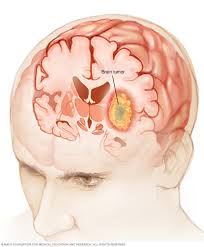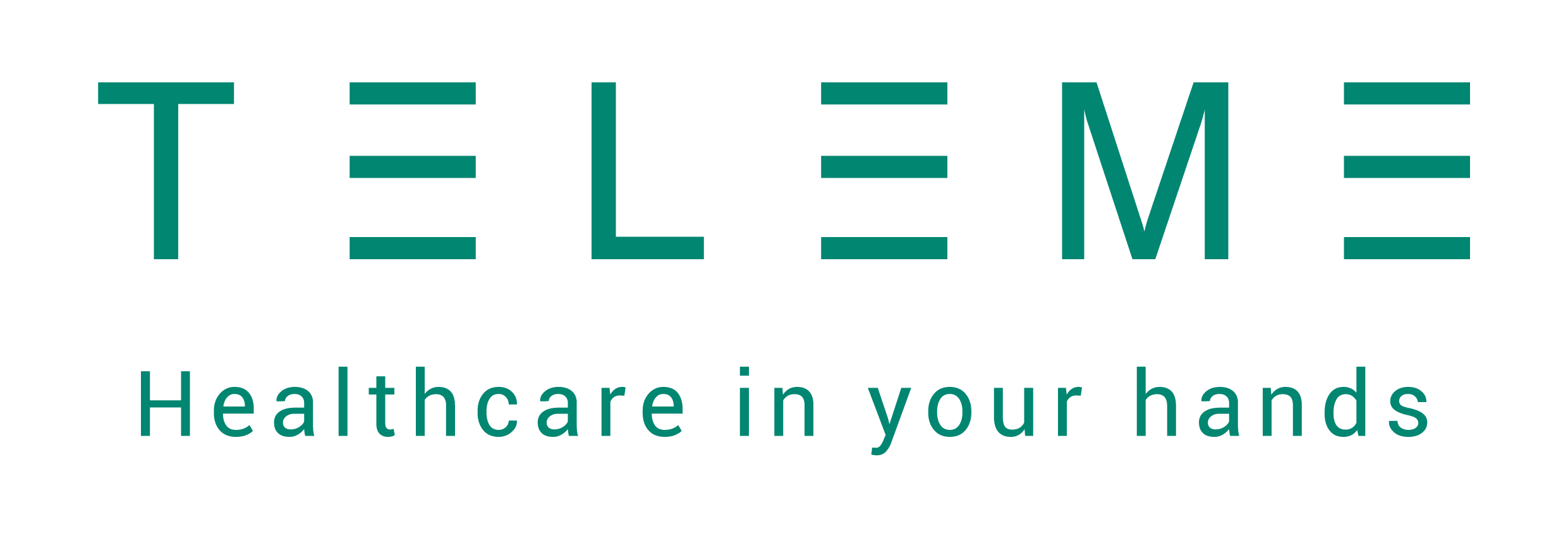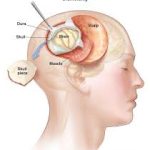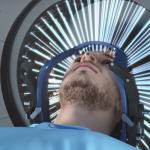
Types of Brain Tumours
Brain tumours either originate from the brain itself (called primary brain tumours) or are cancers which have spread from other parts of the body (called secondary brain tumours).
1. Primary Brain Tumours
Primary brain tumours originate within the brain itself. They can be either benign (where the cells are usually slow growing) or malignant (where the cells are growing rapidly in an aggressive manner and are life-threatening). These are some of the more common tumours;
- Gliomas are the most common type of primary brain tumour (accounting for about 80% of all brain tumours) which can be classified into several subtypes namely astrocytomas, oligodendrogliomas and ependymomas depending on their origin cell type
- Meningiomas are typically benign and slow growing
- Pituitary Adenomas are benign tumours develop in the pituitary gland
- Medulloblastomas are malignant tumours which originate in the cerebellum, more commonly seen in children
2. Secondary Brain Tumours
Secondary brain tumours (also known as metastatic brain tumours), originate in other parts of the body (such as from lung cancer, breast cancer, colon cancer or melanoma) and spread to the brain. When this happens, the patient is considered to have advanced or Stage 4 cancer.
Symptoms of Brain Tumours
Symptoms of brain tumours can vary widely depending on the size, location and type of tumour. These are some of the more common symptoms;
- Headaches which are worse in the morning (or on waking) and accompanied by nausea and vomiting are often early signs of brain tumours due to the increased pressure effect
- Seizures can occur when there is abnormal electrical activity in the brain triggered by the tumour pressing on or irritating the sensitive brain tissue.
- Nausea and Vomiting: Persistent nausea and vomiting, particularly in the morning, can be related to increased pressure within the skull caused by a brain tumour.
- Vision Problems such as double vision or loss of visual field occur when the optic nerve or occipital lobe of the brain is involved
- Weakness or Numbness particularly on one side of the body occur when the tumour is affecting the motor area of the brain (which controls body movement)
- Cognitive Changes such as memory loss, difficulty concentrating or confusion
- Personality or Behavioural Changes such as irritability or personality changes can occur when the frontal lobe of the brain is involved
- Speech Difficulties such as slurred speech, difficulty finding words or changes in speech patterns can occur when the temporal-parietal lobe of the left brain is affected
- Balance and Coordination Problems such as being unsteady or loss of balance occurs when the cerebellum or brainstem is involved
- Hearing issues such as hearing loss, ringing in the ears (tinnitus), or difficulty understanding speech can occur when the temporal lobe is involved
Investigations & Diagnosis
Early diagnosis of brain tumours is crucial for improving outcomes. After a detailed physical examination, you will need to have brain imaging studies such as an MRI, MRA, CT Scan or PET Scan to evaluate the size, location and characteristics of the tumour to help plan your treatment. A brain tissue biopsy may also be required to determine the tumour cell type and molecular genetic make-up.
Treatment Options
The treatment of brain tumours depends on many factors such as the cell type, size, location and grade of the tumour, as well as the patient’s overall health and preference.
A. Surgery is often the first-line treatment for brain tumours, especially if the tumour is accessible and can be safely removed. The goal of surgery is to remove as much tumour as possible and provide relief of pressure on the brain. Options include;
- Craniotomy is the most common surgical procedure and involves removing a portion of the skull to access the tumour. After the tumour is removed, the skull is replaced, and the incision is closed.
- Endoscopic Surgery may be used to remove tumours located in hard-to-reach areas of the brain such as the pituitary tumour
B. Radiotherapy which uses high-energy rays to destroy cancer cells, can be used as primary treatment for inoperable tumours or as an adjunct to surgery or to treat residual tumour cells after surgery.
C. Gamma Knife Surgery is a specialised form of radiotherapy specifically designed for brain tumours results in good tumour destruction with minimal damage to surrounding brain regions
D. Chemotherapy is often used in combination with surgery and radiotherapy for the treatment of malignant brain tumours.
E. Targeted Therapy specifically target genetic mutations or molecular pathways that drive tumour growth
F. Immunotherapy helps your immune system to fight cancer by helping the immune cells recognise and attack cancer cells
Prognosis after Treatment
Survival rates for brain tumours vary widely depending on the type and grade of the tumour. Patients with low-grade gliomas (which are slow-growing tumours), may have a survival rate of 10 years or more. However, these tumours can sometimes progress to higher-grade, more aggressive forms. High-grade gliomas (such as glioblastoma), have a poorer prognosis with median survival times ranging from 12 to 18 months. However, some patients may live longer with aggressive treatment and new therapies. The prognosis for meningiomas (which are typically benign), is generally excellent with a high rate of long-term survival.
See a Brain Specialist for a full assessment and to discuss your treatment options
Disclaimer. TELEME blog posts contains general information about health conditions and treatments. It is not intended to be a substitute for professional medical advice, diagnosis or treatment. The information is not advice and should not be treated as such.
If you think you may be suffering from any medical condition, you should seek immediate medical attention from your doctor or other professional healthcare providers. You should never delay seeking medical advice, disregard medical advice, or discontinue medical treatment because of information on this website.








